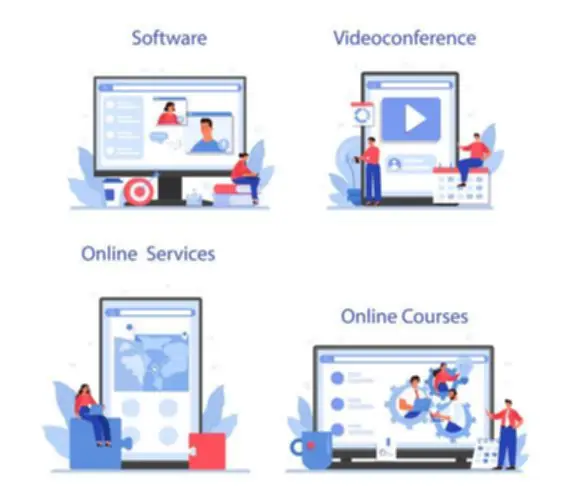Danger Assessment: Process, Tools, & Techniques
A firm specializing in business software improvement lands its first project to build a consumer-facing gaming app. This promising project can generate substantial income but is relatively riskier as it’s a new niche for the corporate. ClickUp offers simple to stylish risk register templates to support all forms of risk identification initiatives.

Difference Between Threat Evaluation And Risk Evaluation
You can improve the chance identification process by utilizing generative AI tools to investigate huge quantities of knowledge to detect patterns and anomalies which will point out potential dangers. These tools can provide predictive insights and help you keep ahead of emerging threats. You can also use AI to assist create danger identification templates or checklists to enhance process automation. Risk assessments assess security hazards across the whole workplace and are oftentimes accompanied with a danger matrix to prioritize hazards and controls.
Record Some Of The Most Common Risks Related Along With Your Project

While accepting the risk, it stays targeted on keeping the loss contained and preventing it from spreading. The process begins with an preliminary consideration of danger avoidance then proceeds to 3 additional avenues of addressing danger (transfer, spreading and reduction). Ideally, these three avenues are employed in live performance with each other as a part of a complete technique. Describe the potential failure effect, the potential trigger, and present controls. The journey of threat identification is intricate and multi-dimensional, demanding both detailed scrutiny and broad imaginative and prescient. When working in environments where dangers are each omnipresent and ever-evolving, having the best methods in place is crucial.
Risk Identification Strategies To Protect Your Corporation From Hurt
There are a number of brainstorming strategies that assist determine potential dangers. However, thoughts mapping greatest serves this function because it not solely lets you determine widespread dangers but additionally visualize the relationships between them. Based on the final findings, threat administration methods like contingency planning and hedging are applied to reduce the impact of essential dangers. Employees at all ranges of the organization can provide useful insights into potential dangers. Frontline employees, in particular, are sometimes the first to notice rising points. Encouraging open communication and suggestions from the wider employee base can uncover risks that may otherwise go unnoticed.
Without the help and enter of employees, implementing ISO will be much harder than it needs to be. Qualitative danger evaluation charges or scores threat primarily based on the perception of the severity and chance of its penalties. Quantitative danger analysis, on the opposite hand, calculates risk based mostly on obtainable data.
Threat Identification And Its Position In Danger Management
Typically, root cause evaluation is used after the manifestation of a problem, but we can additionally apply it preventively, taking an impact or danger to be avoided as a place to begin. Conducting incident investigations, even for close to misses, is essential for organizations. This is as a outcome of analyzing incidents helps organizations take proactive measures to forestall related occurrences sooner or later. Find out how menace management is used by cybersecurity professionals to forestall cyber attacks, detect cyber threats and respond to safety incidents. Simplify how you handle threat and regulatory compliance with a unified GRC platform fueled by AI and all of your information.

After assigning a threat ranking to an identified hazard, it’s time to come up with effective controls to protect staff, properties, civilians, and/or the setting. This sort of evaluation manages basic office risks and is required under the management of authorized health and security administrations corresponding to OSHA and HSE. This refers to threat assessments carried out for large scale advanced hazard websites such as the nuclear, and oil and gasoline industry.
- This course of allows you to formulate a abstract of risks to prioritize and the actions to take immediately.
- Unlike danger analysis, risk evaluation is primarily centered on security and hazard identification.
- Now, for assumption analysis, try to identify all the assumptions in your project plan and the extent of tolerable deviation.
- Risk identification must be performed as early as potential within the project lifecycle.
Strengthen your knowledge by navigating three robust scenario-based examples of threat identification beneath. The Monte Carlo analysis is to quantify the potential for a risk event by way of simulation. You want a computer-generated program built on a mathematical model—it runs varied simulations primarily based on enter and output variables to predict the possibility of each danger. The ClickUp Root Cause Analysis Template is a must-have for exposing and troubleshooting risks inside ongoing tasks. It helps categorize points as Whys till you arrive on the Winning Solution, all neatly stacked in Custom Fields. The finest way to gather professional opinion on any project danger is by utilizing the Delphi method.
Risk identification is an essential a part of any business, but it’s especially essential for small companies. For one, small companies are more vulnerable than larger ones, so that they must be further vigilant about dangers. And for another, small companies have fewer resources to fall again on if something goes mistaken. BP and scientific resting HR have been measured utilizing an computerized BP cuff (FT-500R PLUS, Jawon Medical, South Korea), with the participants sitting upright after resting for a minimal of 5 min. The evaluation used the imply values of the two measurements for both BP and HR.
SWOT Analysis represents the organization’s strengths, weaknesses, opportunities, and threats. It is a structured method that may help to establish inner and external factors that can affect the success of an initiative. Businesses can use risk identification to plan for probably detrimental occurrences and reduce their impact earlier than they happen. We suggest OSHA’s nice learning sources in understanding tips on how to assess consequence and probability in your threat assessments.
During hazard identification, teams examine workspace and processes with the goal of identifying potential dangers to human well being and safety. The types of hazards groups may identify differ from group to organization, but it’s crucial to guarantee that the staff detects any and all potential threats to your worker’s safety. A threat identification checklist is a tool used to assist project managers and staff members systematically identify potential risks that might impression a project. The guidelines outlines a series of questions or prompts to information the risk identification process, ensuring that every one related components are thought of.
This cross-functional collaboration ensures a more complete understanding of the dangers across the entire group. The final and final step in risk identification is listing down the belongings in the order of their relevance. This process permits you to formulate a abstract of dangers to prioritize and the actions to take instantly.
Furthermore, investing in preventive measures, corresponding to fireplace suppression systems, flood barriers, and earthquake-resistant infrastructure, can scale back the probability and severity of harm. Another area to be analyzed, and which may present useful info, are documents. The SWOT matrix is beneficial for identifying the positive points of a project or enterprise, in addition to what could be detrimental to reaching goals. Remember, risk is the uncertainty of a future event, which can be positive (an opportunity) or adverse (a threat). IBM cybersecurity providers deliver advisory, integration and managed safety companies and offensive and defensive capabilities.
